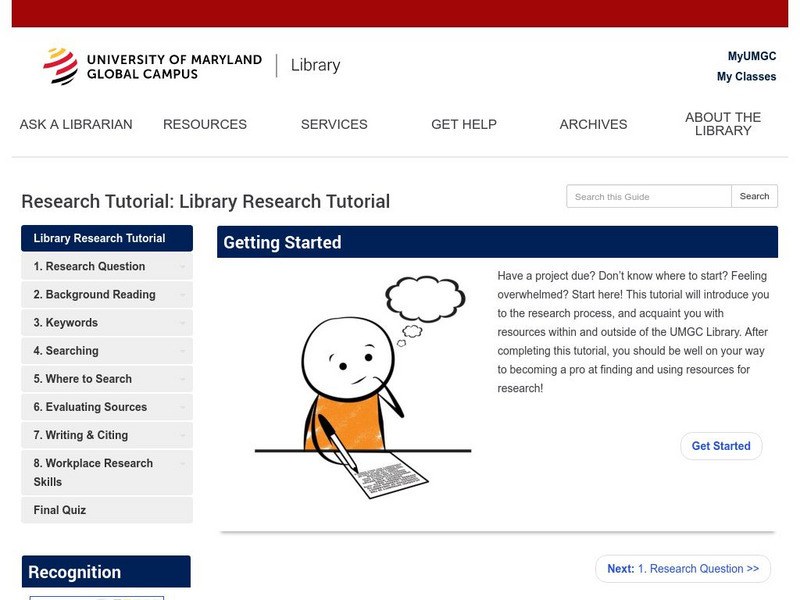CK-12 Foundation
Direct Variation: Value of a Painting
Help your pupils find a pattern of direct variation. Young scholars use input-output pairs to find a constant of variation and then write the equation. As they build their equations, the interactive lesson provides feedback.
Curated OER
ESL: Punctuating Titles
When are titles underlined, italicized, or placed in quotation marks? Take your class to the computer lab to give them some independent practice. Here they read through the information, examples, and explanations provided. They then...
CK-12 Foundation
Function Rules for Input-Output Tables: Function Machine!
Watch as a function machine converts an input to an output. Learners determine the work applied by the function machine to write a function rule. Questions accompany the function machine animation to guide individuals to conclusions.
CK-12 Foundation
Conversion of Decimals, Fractions, and Percents
Five questions—true or false and multiple-choice—challenge mathematicians to convert decimals, fractions, and percents. An interactive table displays how to write a portion of shapes in a variety of ways. A discussion question concludes...
Scholastic
Study Jams! Roots and Stems
Six slides come with information about roots and stems. In addition to the slide show, find a seven-question, multiple choice quiz and vocabulary guide. As a homework assignment, get your class to view the slides, take the quiz, print...
Scholastic
Study Jams! The Kingdoms of Life
Zoe and RJ discuss the way scientists classify organisms into five kingdoms. Characteristics of each group are highlighted within their conversation and with text. First-time taxonomists can view the animation at home, take the...
Scholastic
Study Jams! Fossils
By viewing and reading these slides, your precious paleontologists learn what makes a fossil and what scientists can learn by studying them. Consider giving the website to pupils as homework. They can read the slides, take an assessment...
Curated OER
Writing Introductions
In this writing introductions worksheet, students read about 4 types of introductions, then analyze 6 examples and interactively write comments about each one.
CK-12 Foundation
Meiosis
"We Are Never Ever Getting Back Together" makes the perfect theme song for meiosis. The simulation encourages scholars to move the chromosomes and chromatids to properly illustrate the meiosis break up. Multiple-choice questions allow...
CK-12 Foundation
Function Rules for Input-Output Tables: Soda Sugar Function Table
Examine the relationship between the input and output variables in a table of values. As learners build an input-output table using online manipulatives, they begin to identify patterns. They answer questions about these patterns...
CK-12 Foundation
Addition and Multiplication Properties with Real Numbers: The Secret of Subtraction
An interactive boosts mathematicians' knowledge of subtracting integers using a horizontal number line by way of multiple-choice, true or false, and discussion questions.
CK-12 Foundation
Decimal Addition: Adding Little Pieces
A five-question interactive test scholars' knowledge of adding and subtracting decimals. A tool aids in problem-solving with movable parts that reveal addends and sums. Question types include one discussion, fill and in the blank, and...
CK-12 Foundation
Addition of Fractions
Five word-problems challenge mathematicians to add fractions. Interactive fraction circles assist scholars in problem-solving. Question types include multiple-choice, true or false, and a discussion.
CK-12 Foundation
Repeating Decimals: Does 1 equal 0.999... ?
Six questions make up a challenging interactive that tests scholars' knowledge of repeating decimals. Mathematicians answer true or false and multiple-choice questions with help from a tool that highlights decimal movement in an...
CK-12 Foundation
Prices Involving Discounts: Save Money with Coupons!
Nine questions make up an interactive that challenges scholars to identify new prices after discounts. Question types include fill in the blank and multiple choice. A fully-functional tool assists participants in solving word problems....
CK-12 Foundation
Percent of a Number: Acid Solution
Mathematicians answer five questions about percents, ratios, and proportions with help from an interactive graduated cylinder. Question types include multiple-choice, fill-in-the-blank, and discussion.
CK-12 Foundation
Values Written as Powers: Binary Numbers 9 to 16
Challenge mathematicians to crack the binary code with an interactive that focuses on numbers nine to 16. A table reveals exponential equations to aid in answering multiple-choice questions. A discussion question gauges comprehension.
Shodor Education Foundation
Ordered Simple Plot
Open your imagination to make algebra-inspired creations. An interactive lesson has scholars graph images from a set of parameters. Users can practice minimum values, maximum values, and scale as well as key features.
Scholastic
Study Jams! Metamorphic Rocks
Photographs of magnificent metamorphic rock formations make up the bulk of this brief slide show. Along with the upbeat background music, slow-moving slides, and informational captions of the slide show, you will also find key...
Curated OER
Representing Numbers In Scientific Notation
In this scientific notation worksheet, students complete 10 multiple choice questions containing numbers with decimals. Answers are given online.
Curated OER
TAKS Quiz-Probability of Drawing One Item
In this TAKS math quiz worksheet, learners take an online quiz focused on the probability of drawing one item. Quiz may be graded online by clicking a link.
Curated OER
TAKS Quiz-Homophones
In this TAKS quiz learning exercise, students take an online quiz focused on homophones. Quiz may be graded online by clicking a link.
CK-12 Foundation
Ck 12: Plix: Mass Number: Writing the Periodic Table
[Free Registration/Login Required] Put the elements in the correct order on the table by using the information given in each of the element squares.
Other
Umuc: Secrets of My Research Success
This 35-minute interactive tutorial models the research process via the story of Quentin, a UMUC student. It takes him through the various research process steps: understand how to locate background information on his topic by showing...




















